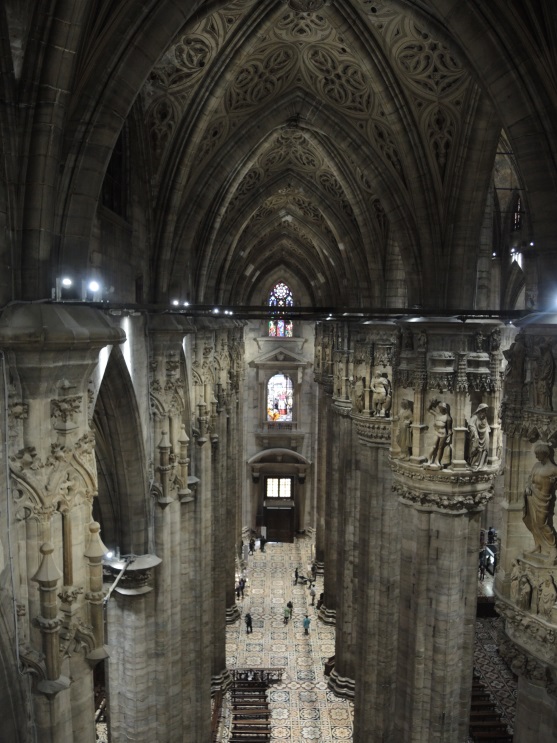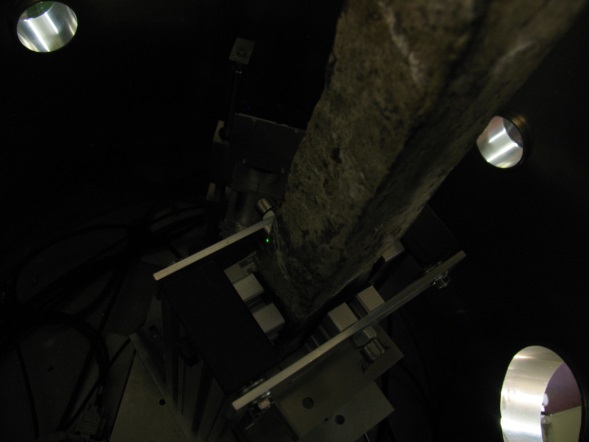As one of the biggest and widest examples of gothic architecture Milan Cathedral, or Duomo di Milano, is a prominent feature on the Italian skyline. The cathedral has a very long and complex construction history, which started in 1386 and lasted more than five centuries. These days the cathedral draws huge crowds, attracting around 5 million visitors every year.
Milan Cathedral is a feat of engineering too – towering more than 100 metres above ground the structure supports a number of heavy architectural features including 325,000 tonnes of statues. In 2012 the replacement of a broken tie rod in the cathedral presented a rare opportunity to study a piece of the buildings history, sparking a flurry of research. “A deep characterization of this metallic reinforcement is greatly relevant; it's not only an opportunity for us to study a sample of medieval technology but a chance for us to investigate a structural element that's remained in full operation for more than 600 years" explains Dr Daniela Di Martino of Università Milano-Bicocca.
Researchers from Università Milano-Bicocca and Politecnico di Milano visited ISIS Neutron and Muon Source and Budapest Neutron Centre to non-destructively study this artefact of fundamental importance to one of the most famous buildings in the world.
A piece of medieval technology
For those of us unfamiliar with construction terminology tie rods are long metallic rods that reinforce buildings. Each tie rod in Milan Cathedral is between 9-18 metres long and is suspended between 16-30 metres above the ground in the nave of the cathedral.
After the broken tie rod was discovered in 2012 several studies were carried out on the sample. The remaining suspended tie rods were also inspected on-site, as it is essential for ancient buildings to be examined using on-site monitoring techniques.



Top image: iron tie rods visible between pillars of Milan Cathedral. Credit: image taken by M. Bellanova, Politecnico di Milano. Middle image: a portion of the broken tie rod, subject of this research. Credit: image taken by M. Bellanova, Politecnico di Milano. Bottom image: the specimen during the measurements at INES (the green laser spot is an alignment utility to check the position of the neutron beam). Credit: image taken by Daniela Di Martino and Antonella Scherillo.
Neutrons: the perfect tool to study ancient artefacts
Neutrons are the perfect tool to study ancient artefacts for a number of reasons. Firstly, they're highly penetrating which allows researchers to infer the mean bulk composition of a sample - not just its surface composition. Secondly, neutron analysis is non-destructive and samples don't need cleaning, allowing ancient artefacts to remain intact.
“The instruments at ISIS Neutron and Muon Source have studied many ancient artefacts over the years. A lot of people think ENGIN-X is only used to study engineering components, but the instrument has examined Napoleonic copper bolts, medieval spearheads, Egyptian grave goods and more“ remarks ENGIN-X instrument scientist Dr Joe Kelleher.
In this study two neutron instruments – ENGIN-X and INES were used to characterise the broken tie rod. “INES is so frequently used for archaeometric analyses we've equipped the instrument with a specially developed frame conceived for handling big and delicate samples. In this experiment we used a dedicated sample holder, able to hold up very heavy specimens up to 30kg" explains Dr Antonella Scherillo, INES instrument scientist at ISIS Neutron and Muon Source.
A method to test new on site monitoring techniques
Various different neutron techniques were used in this study. Neutron Resonant Capture Analysis allowed single elements of the rod to be detected, which was concluded to be made from iron with zinc impurities. Neutron diffractometry also provided details on the inner regions of the rod, returning crystalline phases and a map of strains. Further analyses were also run at Budapest Neutron Centre (BNC, Hungary). The behaviour of cracks and voids suggested at least two parts of iron were assembled to fabricate the tie rod over 600 years ago.
Dr Daniela Di Martino, lead author of the paper, describes the impact of their findings “Our neutron study derived very useful information, without preparation, or sampling in a non-invasive way. Thus, neutron techniques could always be applied to archaeometallurgical samples prior to other investigations. No other conventional non-destructive technique will allow the same characterization, for the benefit of the cultural heritage research on archaeometallurgy and this study could also be really important to independently validate new on site monitoring techniques."
The detailed information provided by neutrons has not only revealed how fundamental components of Milan Cathedral were constructed, but it's showcased a method to independently validate new on site monitoring techniques. As some of our most loved structures, such as Milan Cathedral, continue to age new on-site monitoring techniques are vital to ensure we enjoy these buildings for many years to come.
Further information
Further information on Milan Cathedral can be found on their website.
The full research publication can be found here: D. Di Martino et al “A neutron diffraction and imaging study of ancient iron tie rods" 2018 JINST 13 C05009 DOI:10.1088/1748-0221/13/05/C05009
Browse all our science highlights here.
Find further information on our instruments ENGIN-X and INES on their webpages.
